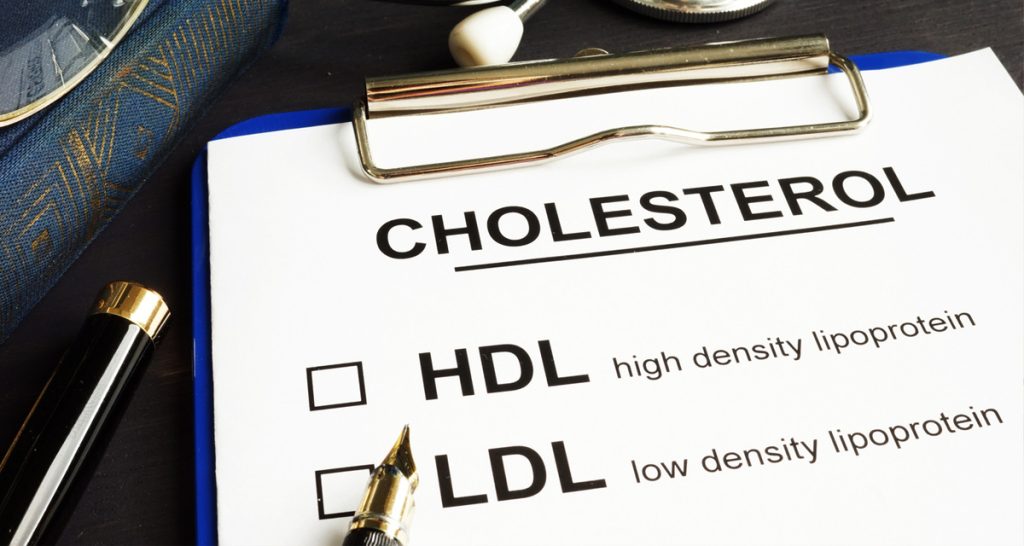When it comes to health checks, cholesterol comes up time and time and again. While we may know that it’s important, we might not really understand why.
For National Cholesterol Month, we’re taking a look at some of the common myths and misconceptions about cholesterol, to better understand why this particular health marker is one to watch.
Firstly, what is cholesterol and why is it important?
Cholesterol is a type of blood fat which is produced in the liver. It’s also found in some types of food, too.
Every cell in the body contains cholesterol and it plays a vital role in keeping you’re the organs and systems in your body working, particularly your brain, nerves, and skin.
Cholesterol has three main jobs:
- Forming the outer layer of all your cells
- Making bile, which helps to digest the fats you eat
- Making vitamin D which keeps your bones, teeth, and muscles healthy
While we need cholesterol in our bodies, too much of it can cause issues, clogging up arteries and leading to problems such as heart disease. We know that too much cholesterol isn’t good, but there’s a lot about managing cholesterol that we often misunderstand.
Here are some of the most common myths about cholesterol:
1. All cholesterol is bad for you
Some forms of cholesterol are essential for good health. Your body needs it to perform important jobs, such as making hormones and building cells. Cholesterol travels through the blood on proteins called lipoproteins.
There are two types of lipoproteins which carry cholesterol throughout the body, and this is where we tend to get confused.
LDL (low-density lipoprotein) (“bad” cholesterol) makes up most of your body’s cholesterol. When your body has too much LDL cholesterol, it can build up in the walls of your blood vessels, restricting and eventually blocking blood flow to and from your heart and other organs.
HDL (high-density lipoprotein) (“good” cholesterol) carries cholesterol back to the liver, which then flushes it from the body. High levels can lower your risk for heart disease and stroke.
2. High cholesterol is easy to spot
Generally, high cholesterol has no signs or symptoms. You may not know you have unhealthy cholesterol levels until it causes a serious problem, like a heart attack or stroke. This is why it’s important to get your cholesterol levels checked every five years, at least.
3. You can’t change your cholesterol levels
You might think that medication is the only way to alter the levels of cholesterol in your body. But by making small lifestyle adjustments, you can absolutely alter your cholesterol levels. Here are a few recommendations:
- Be active every day. Walking, dancing, swimming. Every little bit helps. Try to weave more activity into your day.
- Make healthy food choices. Choosing foods naturally high in fibre and unsaturated fats is great for keeping your cholesterol at a healthy level
- Give up smoking. Smoking damages your blood vessels, putting you at greater risk for heart disease
- Know your family history. If your parents or other immediate family members have high cholesterol, it’s a good idea to get tested more often.
- Reduce your stress levels. Stress is harmful to the body in many ways. In particular, increased levels of cortisol, the stress hormone, can damage your gut, making you more susceptible to food intolerances and inflammation, and in turn, can lead to higher cholesterol levels.
Understanding your own dietary DNA
When it comes to our health and wellbeing, our diet plays a huge role. But it’s not just a case of ‘good foods’ and ‘bad foods’. Every one of us has a unique ‘dietary DNA’ – foods which agree with us, and foods which don’t. This can look very different from person to person. While someone might experience trouble with tomatoes, another may notice problems when they eat tuna.
Understanding the foods that work for, and against us, is a great way to optimise our health and wellbeing. But it isn’t always immediately obvious which foods are causing problems.
It can take up to 72 hours for symptoms of food intolerance to show up, making it hard to identify the trigger. Additionally, it’s common to react to more than one ingredient, making the guesswork harder.
While traditional elimination diets can help you identify trigger foods, it’s a long process with a lot of trial and error which doesn’t always manage to catch all the foods causing your problems. This is where food intolerance testing can help.
Get answers faster with Smartblood
When it comes to food intolerance testing, it’s important to do your research and choose a reputable laboratory testing company.
At Smartblood, we offer a comprehensive test to help you take control of your diet quickly and discover your own trigger foods.
Our home-to-laboratory service gives you fast, accurate results that pinpoint exactly which foods you are reacting to. Tests are completed in our accredited laboratory by trained experts, with clear, easy to understand results sent to you via email within three days.
Dedicated nutritional support
Importantly, our tests include a telephone consultation with our BANT registered Nutritional Therapist. This additional support is there to help you understand your results and put a plan together to make safe, sustainable changes to optimise your diet, particularly during menopause, to make sure you don’t miss out on any important nutrients.


